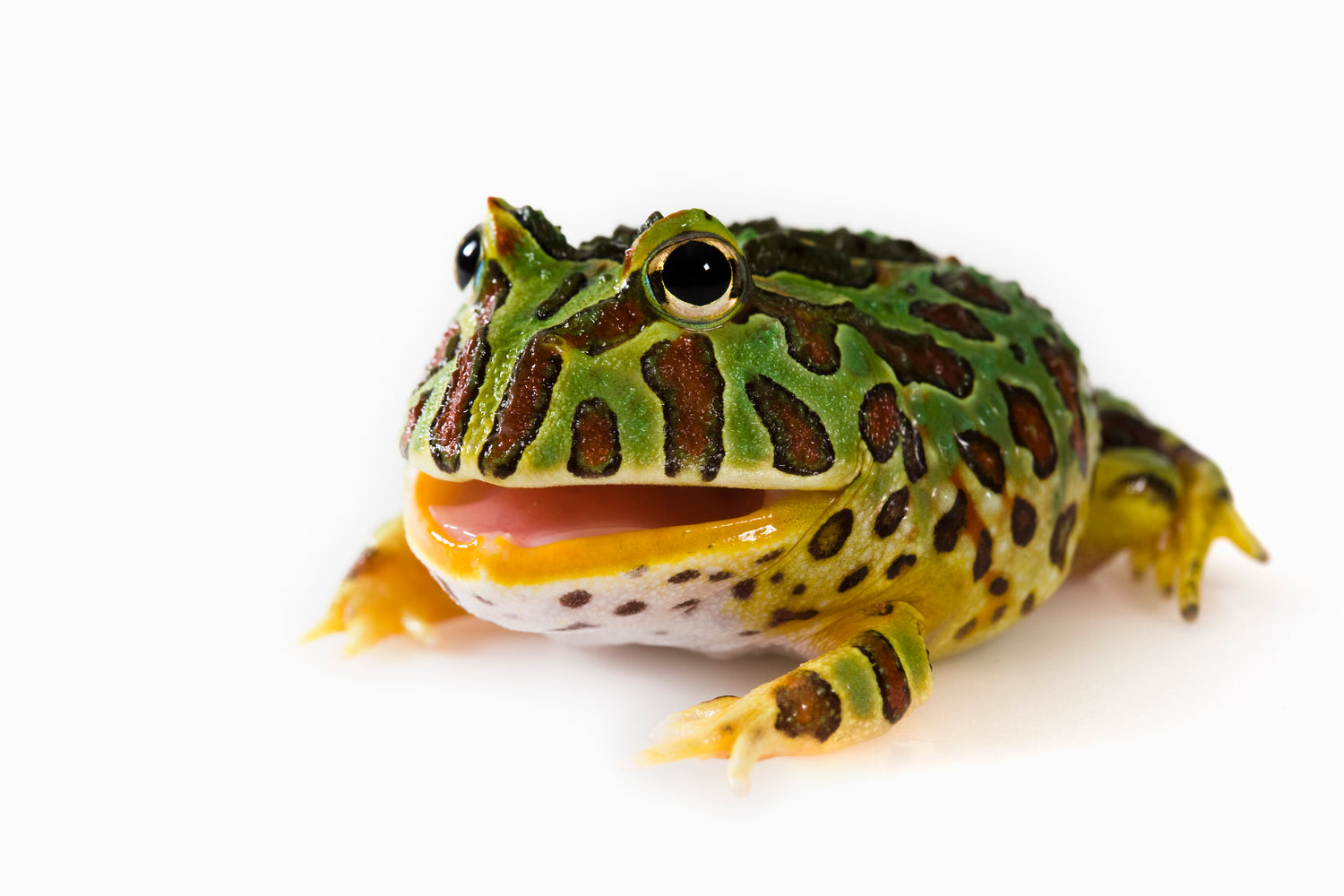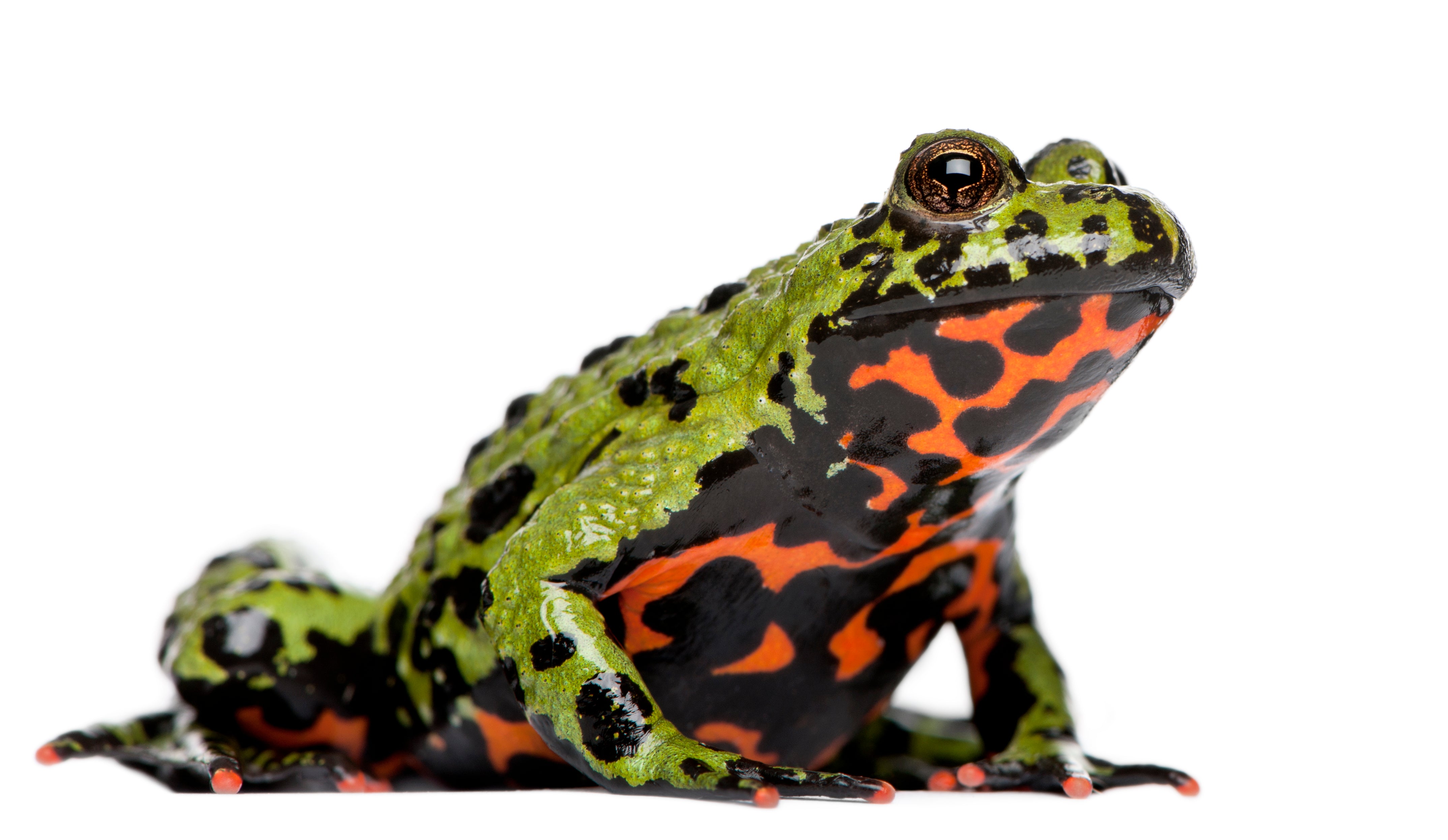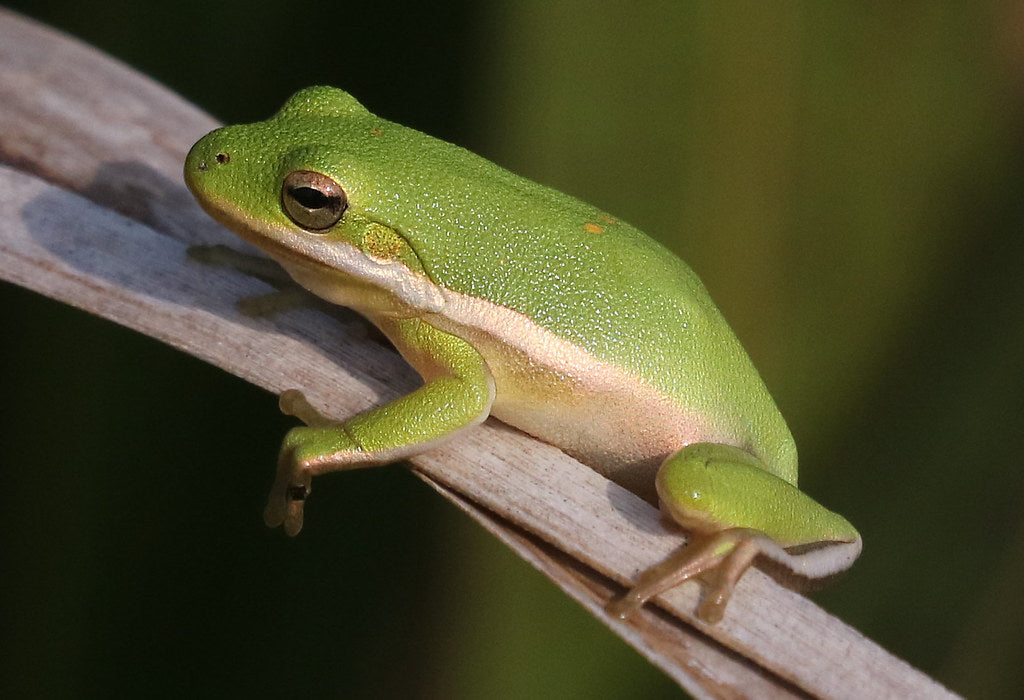Pacman frogs (Ceratophrys ornata) are medium-sized, diurnal, terrestrial amphibians native to parts of Argentina, Uruguay, and Brazil. They are native to moist grasslands, where they bury most of their body in the earth and ambush prey from their camouflaged position.
Pacman frogs can grow up to 6” long, with males being smaller than females. They have squat round bodies, large heads and mouths, small legs, and protruding eyes. They are typically a combination of brown, orange, yellow, black, white, and/or green to create a classic camouflaged appearance, although different colors and patterns have been made available through captive breeding.
Pacman frogs are popular as pets due to the fact that they require relatively little space and are fairly easy to care for, making them beginner-level amphibians. With good care, your pacman frog may live up to 10 years or more!
Pacman frogs are also known as horned frogs, which make up the genus Ceratophrys. This care sheet is specific to the C. ornata, but can be generally applied to all species of pacman frog. However, it is best to research the particular needs of your specific species of horned frog in order to provide the best possible care to your pet.
How much space do pacman frogs need?
Although pacman frogs are quite sedentary as far as frogs go, they still need space to move around, as they are known to relocate from their ambush spot after defecating. The minimum enclosure size for one pacman frog is 20 gallons, or 30”L x 12”W x 12”H.
Cohabitation (keeping multiple pacman frogs in one enclosure) is not recommended, as these frogs are known to be cannibalistic.
Do pacman frogs need UVB?
They have been proven to be able to survive without it, but it’s still best practice to provide low levels of UVB lighting for optimal health and wellbeing. Providing UVB lighting to your frog gives them all of the vitamin D that their body needs, stimulates better appetite and activity, and generally allows them to be healthier than they would be without.
The best UVB bulbs for pacman frogs are:
- Zoo Med T8 Reptisun 5.0
- Arcadia ShadeDweller
The UVB bulb should be housed in a reflective fixture, and the frogs should not be able to get closer than 8” below the lamp. UVB is blocked by glass and plastic, so you can’t give your frog UVB by placing its terrarium in front of an open window. Also make sure that the fixture your UVB bulb is in does not have a clear plastic bulb cover. UVB bulbs decay over time, so don’t forget to replace your bulb every 12 months to maintain good performance.
Lights should be on for 14 hours/day during summer and 10 hours/day during winter to mimic natural seasonal cycles and promote better health through encouraging natural hormonal rhythms.
What temperatures do pacman frogs need?
Pacman frogs are ectotherms, which means that they rely on the temperature of their environment to help regulate their metabolism and stay healthy. If they’re too cold, they won’t have enough energy to stay active and digest their food. If they’re too warm, they can die from heat stress.
The ambient temperature of the enclosure should stay between 75-80°F during the day, and may drop as low as 65°F at night. Temperatures should never go higher than 85°F! Measure air temperatures with a digital probe thermometer, with the probe placed in the middle of the enclosure.
If you need to warm the enclosure, a good way to warm things up by a few degrees is to stick a heat pad to the side or rear of the enclosure. It’s best not to place the heat pad on the bottom of the enclosure if you’re using live plants. To make sure it doesn’t warm the enclosure too much, connect the heat pad to a thermostat.
It’s best not to keep a pet pacman frog if you do not have a reliable way to keep the room sufficiently cool.
What humidity levels do pacman frogs need?
As amphibians, pacman frogs are very dependent on water — especially when they’re still just tadpoles! Pacman frogs don’t really need areas of standing water, but they still need moist substrate and high humidity. That being said, the enclosure should not be kept sopping wet, as this encourages bacterial growth, which in turn will make your frog sick.
Ambient humidity should stay between 60-80% at all times, as measured by a digital probe hygrometer. If needed, misting your frog’s enclosure 1-2x daily with a sprayer will help create the right humidity levels. Using an automatic misting system can be helpful.
Pacman frogs absorb water through their skin rather than drinking, so it’s very important to keep their environment adequately hydrated!
What substrate is good for pacman frogs?
Pacman frogs require a thick layer of moisture-retentive substrate to help maintain healthy humidity levels. As an added perk, it also tends to make the enclosure more attractive. This substrate should have small particles and hold moisture well. It should also be able to support plant life if you are using live plants. Options include:
- Peat moss
- Zoo Med Eco Earth
- Exo Terra Plantation Soil
- Sphagnum moss
- Zoo Med Reptisoil
Substrate should be at least 3” deep to allow for burrowing behavior.
If you are not using a bioactive setup, substrate should be replaced monthly in order to maintain good hygiene.
What décor can you use in a pacman frog terrarium?
While pacman frogs are quite sedentary, pacman frogs are likely to feel exposed and insecure in a terrarium with nothing in it except substrate. Décor options for pacman frogs include:
- leaf litter
- seed pods
- mopani wood
- cork bark
- rocks
- moss
- live or artificial plants
- misc. ornaments
Whatever you choose to use, make sure that the frog has cover to hide in so it can feel secure in its environment.
What do pacman frogs eat?
Pacman frogs are carnivores, which means that they need to eat animal prey in order to get the nutrition that they need. Live insects should be offered every other day. Appropriately-sized mice can be offered no more than every other week, and should replace that week’s insect offerings. Feeders should be at least slightly smaller than the frog’s head.
Insect options for pacman frogs:
- Black soldier fly larvae
- Crickets
- Discoid roaches
- Dubia roaches
- Earthworms
- Grasshoppers
- Hornworms
- Mealworms
- Silkworms
- Superworms
For best results, offer as much variety in your frogs’ diet as possible!
Supplements
Pacman frogs need vitamin and mineral supplements to enjoy optimal health. Feeder insects should be dusted with Repashy CalciumPlus LoD at each feeding for juveniles, and 1x/week for adults.
Do pacman frogs like to be handled?
Generally speaking, handling is very stressful for frogs, so it should be avoided. Handling is very stressful for them, so it’s best to content yourself with watching them hop around than try to get hands-on.
If at any point you absolutely must grab your frogs, put on a pair of disposable gloves, cup the frog’s body firmly but gently, and keep handling time to an absolute minimum. Thicker gloves may be needed if your frog has a habit of attacking fingers, as they have a quite powerful bite.
*This care sheet contains only very basic information. Although it’s a good introduction, please do further research with high-quality sources to obtain additional information on caring for this species.




Leave a comment
This site is protected by hCaptcha and the hCaptcha Privacy Policy and Terms of Service apply.